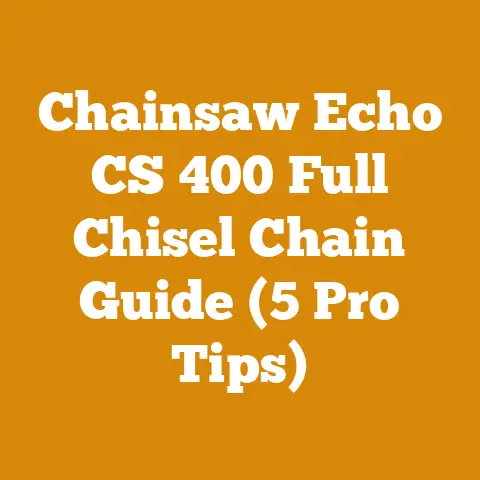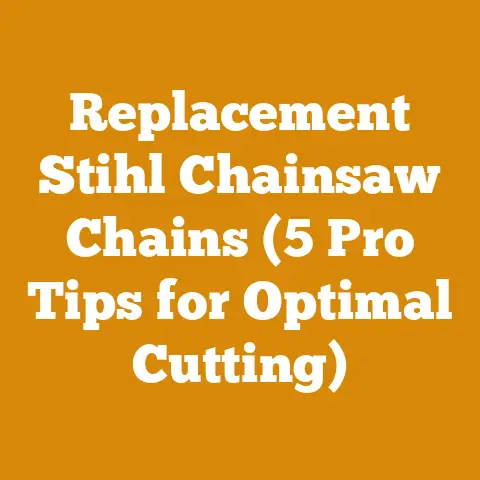Drive Belt for Cub Cadet LT1042 (Transmission Fill Tips)
I’ve lost count of how many times I’ve heard folks grumbling about their Cub Cadet LT1042 mower suddenly refusing to move. More often than not, the culprit is a simple, yet crucial component: the drive belt. And while replacing it seems straightforward, there’s a knack to doing it right, along with some essential transmission maintenance tips that can save you a lot of headaches down the road. This article is my attempt to demystify the process, sharing everything I’ve learned from years of working with these machines, from basic belt replacement to more in-depth transmission care.
Why is the Drive Belt So Important?
The drive belt on your Cub Cadet LT1042 is the lifeline that connects the engine’s power to the transmission, enabling the wheels to turn. It’s a rubber belt that transfers rotational force. Over time, this belt can wear down, stretch, crack, or even break due to constant use, exposure to the elements, and the stress of engaging the mower deck. A failing drive belt will result in reduced speed, slipping, or complete loss of drive.
Think of it like the chain on a bicycle. If the chain is loose, rusty, or broken, you’re not going anywhere. The same principle applies to your mower’s drive belt.
Identifying the Need for a Drive Belt Replacement
Before diving into the replacement process, it’s crucial to confirm that the drive belt is indeed the problem. Here are some common symptoms:
- Slipping: The mower moves slower than usual, especially on inclines. You might hear a squealing or chirping sound.
- Reduced Speed: The overall speed of the mower is noticeably diminished.
- Inconsistent Drive: The mower might move intermittently or jerkily.
- Complete Loss of Drive: The mower doesn’t move at all when the drive pedal is engaged.
- Visible Damage: Upon inspection, the belt shows signs of cracking, fraying, or missing chunks.
If you experience any of these symptoms, it’s time to inspect the drive belt.
Gathering Your Tools and Materials
Before you begin, gather the following tools and materials:
- New Drive Belt: Make sure you get the correct replacement belt for your Cub Cadet LT1042. Check your owner’s manual for the exact part number. Using the wrong belt can cause performance issues or even damage your mower.
- Socket Set: A standard socket set with various sizes will be needed to remove bolts and fasteners.
- Wrench Set: A set of wrenches for loosening and tightening nuts and bolts.
- Screwdrivers: Both flathead and Phillips head screwdrivers.
- Pliers: For gripping and manipulating parts.
- Jack or Ramps: To safely lift the mower for access to the drive belt.
- Jack Stands: Essential for safety when working under the mower. Never work under a mower supported only by a jack.
- Gloves: To protect your hands.
- Safety Glasses: To protect your eyes from debris.
- Wheel Chocks: To prevent the mower from rolling.
- Pen and Paper (or a Camera): To document the belt routing before removal. This is extremely helpful when reassembling.
- Belt Installation Tool (Optional): Some people find a belt installation tool helpful, especially for tight spaces.
- Transmission Fluid (Recommended): If you’re already replacing the belt, it’s a good time to check and potentially change the transmission fluid. Use the type specified in your owner’s manual.
- Funnel: For adding transmission fluid.
- Drain Pan: To catch any spilled transmission fluid.
- Rags or Shop Towels: For cleaning up spills and wiping down parts.
Step-by-Step Guide to Replacing the Drive Belt
Safety First!
- Disconnect the Spark Plug: Before starting any work, disconnect the spark plug wire to prevent accidental starting.
- Engage the Parking Brake: Make sure the parking brake is engaged.
- Chock the Wheels: Place wheel chocks behind the rear wheels to prevent the mower from rolling.
Accessing the Drive Belt
- Raise the Mower: Use a jack or ramps to safely raise the mower. Ensure the mower is stable and supported by jack stands before proceeding. I’ve seen too many accidents happen when people skip this crucial step. Don’t become a statistic.
- Remove the Mower Deck (if necessary): Depending on the model year of your LT1042, you may need to remove the mower deck to gain access to the drive belt. Consult your owner’s manual for instructions on removing the deck. It typically involves disengaging the belt and detaching the deck from its mounting points.
- Locate the Drive Belt: The drive belt is typically located between the engine pulley and the transmission pulley. It’s usually routed around several idler pulleys that maintain tension and guide the belt.
Removing the Old Drive Belt
- Document the Belt Routing: Before removing the old belt, take a picture or draw a diagram of how it’s routed around the pulleys. This will be invaluable when installing the new belt. I cannot stress this enough. I’ve spent countless hours trying to re-route belts without a reference, and it’s incredibly frustrating.
- Release Belt Tension: Most Cub Cadet LT1042 models have a tensioner pulley that needs to be released to loosen the belt. Locate the tensioner pulley and use a wrench or socket to release the tension. This usually involves pushing or pulling on the tensioner arm.
- Remove the Old Belt: Once the tension is released, carefully remove the old belt from around the pulleys. You may need to wiggle it or use a screwdriver to gently pry it off. Be careful not to damage the pulleys.
- Inspect the Pulleys: While the belt is off, inspect all the pulleys for wear, damage, or excessive play. Replace any pulleys that are worn or damaged. A worn pulley can quickly destroy a new belt.
Installing the New Drive Belt
- Route the New Belt: Using your diagram or picture as a guide, route the new belt around the pulleys. Make sure the belt is seated properly in the grooves of each pulley.
- Engage the Tensioner Pulley: Re-engage the tensioner pulley to apply tension to the belt.
- Double-Check the Routing: Double-check that the belt is routed correctly and that it’s seated properly on all the pulleys.
- Reinstall the Mower Deck (if removed): If you removed the mower deck, reinstall it according to the instructions in your owner’s manual.
- Lower the Mower: Carefully lower the mower from the jack stands.
- Reconnect the Spark Plug: Reconnect the spark plug wire.
Testing the New Drive Belt
- Start the Mower: Start the mower and engage the drive pedal.
- Check for Slipping: Listen for any signs of slipping or squealing. If you hear any unusual noises, stop the mower and re-check the belt routing and tension.
- Test Drive: Test drive the mower to ensure it’s operating smoothly and at the correct speed.
Transmission Fill Tips and Maintenance
Now that you’ve replaced the drive belt, let’s talk about transmission maintenance. The transmission is a critical component of your mower, and proper maintenance can significantly extend its lifespan.
Understanding Your Transmission
The Cub Cadet LT1042 typically uses a hydrostatic transmission. This type of transmission uses hydraulic fluid to transmit power from the engine to the wheels. It offers smooth, variable speed control and is generally more reliable than older gear-drive transmissions.
The Importance of Transmission Fluid
The transmission fluid serves several important functions:
- Lubrication: It lubricates the internal components of the transmission, reducing friction and wear.
- Cooling: It helps to dissipate heat generated by the transmission.
- Hydraulic Power: It provides the hydraulic power necessary for the transmission to operate.
- Cleaning: It helps to flush away contaminants and debris.
Over time, the transmission fluid can become contaminated, degraded, and lose its lubricating properties. This can lead to premature wear and failure of the transmission.
Checking the Transmission Fluid Level
It’s a good practice to check the transmission fluid level periodically, especially if you notice any signs of transmission problems.
- Locate the Transmission Fluid Reservoir: The transmission fluid reservoir is typically located on the rear of the mower, near the transmission. Consult your owner’s manual for the exact location.
- Clean the Area: Clean the area around the reservoir cap to prevent dirt and debris from entering the transmission.
- Remove the Cap: Remove the reservoir cap.
- Check the Fluid Level: The fluid level should be between the “Min” and “Max” marks on the dipstick or reservoir.
- Add Fluid if Necessary: If the fluid level is low, add the type of transmission fluid specified in your owner’s manual. Use a funnel to avoid spills.
- Replace the Cap: Replace the reservoir cap securely.
Changing the Transmission Fluid
Changing the transmission fluid is a more involved process, but it’s essential for maintaining the health of your transmission. I recommend changing the fluid every 200-300 hours of operation, or at least every two years.
- Warm Up the Transmission: Run the mower for a few minutes to warm up the transmission fluid. This will make it flow more easily.
- Locate the Drain Plug: Locate the transmission drain plug. It’s usually located on the bottom of the transmission. Consult your owner’s manual for the exact location.
- Position a Drain Pan: Place a drain pan under the drain plug to catch the old fluid.
- Remove the Drain Plug: Remove the drain plug and allow the fluid to drain completely.
- Replace the Drain Plug: Once the fluid has drained, replace the drain plug and tighten it securely.
- Locate the Fill Plug: Locate the transmission fill plug. It’s usually located on the top or side of the transmission. Consult your owner’s manual for the exact location.
- Remove the Fill Plug: Remove the fill plug.
- Add New Fluid: Add the type of transmission fluid specified in your owner’s manual until the fluid level reaches the “Max” mark on the dipstick or reservoir. Use a funnel to avoid spills.
- Replace the Fill Plug: Replace the fill plug securely.
- Run the Mower: Start the mower and run it for a few minutes, engaging the drive pedal.
- Check the Fluid Level Again: Check the fluid level again and add more fluid if necessary.
Transmission Fill Tips
- Use the Correct Fluid: Always use the type of transmission fluid specified in your owner’s manual. Using the wrong fluid can damage the transmission.
- Avoid Overfilling: Overfilling the transmission can cause foaming and reduced performance.
- Cleanliness is Key: Keep the area around the fill plug clean to prevent dirt and debris from entering the transmission.
- Check for Leaks: After changing the fluid, check for leaks around the drain plug and fill plug.
- Consider a Filter Change: Some transmissions have a filter that should be changed periodically. Consult your owner’s manual for information on filter replacement.
Additional Transmission Maintenance Tips
- Avoid Overloading: Avoid overloading the mower by towing heavy loads or mowing on excessively steep hills. This puts extra strain on the transmission.
- Regular Inspections: Regularly inspect the transmission for leaks, damage, or unusual noises.
- Proper Storage: When storing the mower for extended periods, follow the storage instructions in your owner’s manual. This may include draining the transmission fluid or adding a fuel stabilizer.
Common Problems and Troubleshooting
Even with proper maintenance, you may encounter some common transmission problems. Here are some troubleshooting tips:
- Loss of Power: If the mower loses power, check the transmission fluid level and condition. Also, check for any leaks or damage to the transmission.
- Slipping: If the transmission is slipping, try changing the fluid. If that doesn’t solve the problem, the transmission may need to be rebuilt or replaced.
- Unusual Noises: Unusual noises, such as grinding or whining, can indicate a problem with the transmission. Have the transmission inspected by a qualified mechanic.
- Overheating: If the transmission is overheating, check the fluid level and condition. Also, check for any obstructions in the cooling fins.
Case Study: Saving a Neglected LT1042
I once had a neighbor who completely neglected his Cub Cadet LT1042. He never changed the oil, never checked the transmission fluid, and just ran it until it wouldn’t run anymore. Eventually, the transmission started slipping badly, and he was ready to scrap the mower.
I offered to take a look at it. I drained the old transmission fluid, which was black and sludgy. I replaced it with fresh fluid and a new filter. To my surprise, the transmission started working much better. It wasn’t perfect, but it was definitely usable.
This experience taught me the importance of regular transmission maintenance. Even a neglected transmission can often be salvaged with a simple fluid change.
Strategic Advantages of Proper Maintenance
Investing time and effort into replacing the drive belt and maintaining your transmission offers several strategic advantages:
- Extended Mower Lifespan: Regular maintenance can significantly extend the lifespan of your mower, saving you money in the long run.
- Improved Performance: A well-maintained mower will perform better, providing a smoother and more efficient mowing experience.
- Reduced Downtime: By preventing problems before they occur, you can reduce downtime and keep your mower running when you need it most.
- Increased Resale Value: A well-maintained mower will have a higher resale value if you ever decide to upgrade.
Costs and Material Specs
- Drive Belt: A replacement drive belt for a Cub Cadet LT1042 typically costs between $20 and $50.
- Transmission Fluid: A gallon of transmission fluid typically costs between $15 and $30.
- Transmission Filter (if applicable): A transmission filter typically costs between $10 and $20.
- Tools: The cost of tools can vary depending on what you already have. A basic socket set and wrench set can cost between $50 and $100.
Skill Level and Timing Estimates
Replacing the drive belt and changing the transmission fluid are relatively straightforward tasks that can be performed by someone with basic mechanical skills.
- Drive Belt Replacement: 1-2 hours.
- Transmission Fluid Change: 1-2 hours.
Practical Next Steps
- Consult Your Owner’s Manual: Read your owner’s manual carefully to understand the specific maintenance requirements for your Cub Cadet LT1042.
- Gather Your Tools and Materials: Gather the necessary tools and materials.
- Inspect Your Drive Belt: Inspect your drive belt for wear and damage.
- Check Your Transmission Fluid Level: Check your transmission fluid level and condition.
- Schedule Regular Maintenance: Schedule regular maintenance tasks, such as changing the drive belt and transmission fluid.
Final Thoughts
Replacing the drive belt and maintaining the transmission on your Cub Cadet LT1042 are essential tasks for keeping your mower running smoothly and efficiently. By following the steps outlined in this guide, you can save money, reduce downtime, and extend the lifespan of your mower. Remember to always prioritize safety and consult your owner’s manual for specific instructions and recommendations. Don’t underestimate the power of preventative maintenance – a little effort can go a long way in keeping your equipment in top condition!






